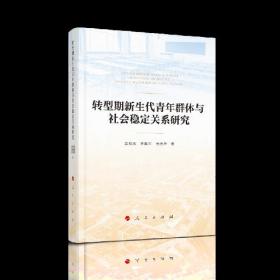
关于形态变化对语序及主语脱落影响的历时性研究
¥ 18.07 5.2折 ¥ 35 九品
仅1件
北京昌平
认证卖家担保交易快速发货售后保障
作者张立平
出版社世界图书出版公司
出版时间2014-01
版次1
装帧平装
货号A23
上书时间2024-11-07
- 在售商品 暂无
- 平均发货时间 15小时
- 好评率 暂无
- 最新上架
商品详情
- 品相描述:九品
图书标准信息
- 作者 张立平
- 出版社 世界图书出版公司
- 出版时间 2014-01
- 版次 1
- ISBN 9787510069871
- 定价 35.00元
- 装帧 平装
- 开本 32开
- 纸张 胶版纸
- 页数 272页
- 字数 210千字
- 【内容简介】
- 本书的主要内容为通过对形态变化做历时性分析来研究形态变化对语序及主语脱落的影响,形态变化包括形态格和动词的性数一致词缀,都是语序变化及主语脱落的决定性因素。本书结构严谨、富有理论深度,对学界具有较高的实践意义。
- 【目录】
-
List of Abbreviations VI
Introduction XI
Chapter l A Study of the Contemporary Morphological Researches
1.1 Contemporary Morphological Researches on Word Order
1.1.1 Rohrbacher (1999)
1.1.1.1 Strong agreement hypothesis
1.1.1.2 Bobaljik's (2002) view on the strong agreement hypothesis
1.1.2.1 Effects of syntactic structure variation
1.1.2.2 0ur view on Bobaljik's (2002) hypotheses
1.1.3 I Nominative case-marking hypothesis
1.1.31 Counterevidence from Faroese
1.1.4 I The hypothesis of overt distinct agreement marking
1.1.4.2 0ur view based on Rohrbacher's (1999) counterevidence
1.1.5 H01mbergnd Platzack(1 995) 1
1.1.5.2 Finiteness feature
1.1.5.3 0ur relative proposals
1.2 Researches on Subj ect Omission
1.2.1 Chomsky (1981, 1982)
1.2.2 Jaeggli and Safir (19 8 9)
1.2.3 Shortcomings of the two null subj ect hypotheses
1.2.4 Vainikka and Levy (1999)
I .2.41 Pronominal correspondence
1.2.4.2 0ur view on Vainikka and Levy's (1999) hypothesis
Chapter 2 Theoretical Background and Main Proposals ofMorphological Effects
2.1Morphological Evolution
2.1.1 Theoretical background
2.1.1.1 0riginal morphological inflections
2.1.1.2 Tendency of morphological evolution
2.1.2 Process of morphological evolution
2.1.3 Verbal agreement paradigms of different richness degrees
2.1.4 0ur hypothesis about ways of language evolution...
2.2 Language Classification with Respect to Verbal Agreement Morphology
2.2.1 Presence of the functional category Agr
2.2.2 C-Agr vs T-Agr
2.2.3 Classification of agreement paradigms
2.2.3.1 Classification in our analysis ofword order variation
2.2.3.2 Classification in our analysis of subj ect omission 5
2.2.3.3 Subdivision of degraded rich agreement morphology
2.3 Theoretical Background about Syntactic Effects of Morphological Change 64
2.3.1 Haeberli's (2000) diachronic study
2.3.2 Word computation
2.4 0ur Proposals of Morphological Effects on Syntax
2.4 1 Two a伍xation levels
2.4.2 Psychological evidence for affixation levels .
2.4.3 Morphological influence on subject omission
2.5 Language Change as a Continuum
Chapter 3 A Diachronic Study of the Romance Languages
3.1 Evolutional Process of Romance Morphology
3.1.1 Ancestor of the Romance languages
3.1.2 Developmental tendency of clitics
3.1.2.1 From simple clitics to special clitics
3.1.2.2 From prefixes to sumxes
3.1.3 Evolution of Romance clitics
3.1.4 0ptional positions of Romance clitics
3.21Romanian morphology
3.2.2 Romanian syntax
3.2.2 1 Unset head parameter value 1
3.2.2.2 Free word order
3.2.2.3V-to-Tmovement 1
3.3IItalianmorphology 114
3.3.2.1 Change of the head parameter value
3.3.2.2 Change from C-Agr to T-Agr
3.2.2.3 V-to-T movement
3.2.2.4 V-to-C movement
3.3.2.5 Comparison between Romanian and Italian
3.4.1 French morphology
3.4.2Frenchsyntax 13
3.4.2.1 0bligatory vs optional clitic doubling in Colloquial
3.4.2.2 Fixed word order
3.4.2.3 V-to-T movement
Chapter 4 A Diachronic Study of the Germanic Languages
4.1 Classification of the Germanic Languages
4.2 Morphological Evolution of the Germanic Languages
4.2.1 Gothic morphology
4.2.2 Morphology of the North Germanic languages
4.2.2.2 Comparison between Old Scandinavian and the Romance
4.2.2.3 Modem Icelandic
4.2.2.4 Mainland Scandinavian languages 15
4.2.3 Morphology of the West Germanic languages
4.2.3 1 German morphology 1
4.2.3.2 Morphological development in English
4.3 Syntactic Comparison of the North Germanic Languages
4.3.1.1 Unset head parameter value
4.31.2Free wordorder
4.3.1.3 Syntactic effects of morphological development
4.3.2 Similarities in the modern Scandinavian languages
4.3.2.1 Head parameter value
4.3.2.2 Verb second constraint
4.3.3 Differences in the modem Scandinavian languages
4.3.4 EMCs in Scandinavian
4.4 Syntax of the West Germanic Languages 1
4.4 11V-to-C movement 1
4.41.2V-to-Tmovement 1
4.4.2.1 V-to-T movement in Old English
4.4.2.2 Loss of V-to-T movement in Modern English
4.4.2.3 Base-generated position of be and have
4.4.2.4 Loss of OV pattern in Modern English
Chapter 5 Null Subject Permission
5 I Main Proposals on Subj ect Omission
5.1.1 Classification of agreement paradigms
5.1.2 Licensing conditions of different null subj ects
5.1.3 Loss of empty topics
5 1 .4 Re-interpretation of topics
5.2 Full-null-subj ect Languages vs Non-null-subj ect Languages
5.21Full-null-subj ect languages
5 .2.2 Non-null-subj ect languages 2
5 .3 Semi-null-subj ect Languages 2 1
5.3.1 0ld Scandinavian and Modern Icelandic
Bibliography
Acknowledgements
点击展开
点击收起
— 没有更多了 —












以下为对购买帮助不大的评价